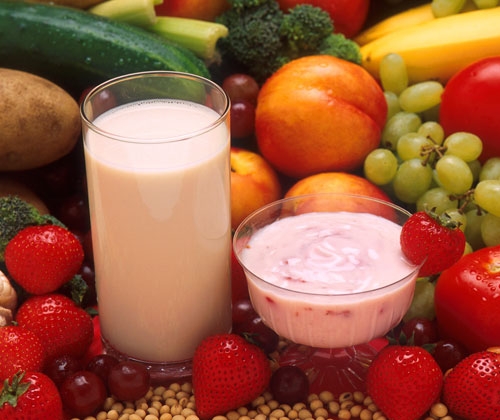Drinking a glass of non-fat or 1% milk will help soothe the day’s tensions and make you sleep better at night, but the benefits go far beyond its calming properties, says UC Cooperative Extension nutrition educator Ellen Sandor.
“The calcium in milk reduces muscle spasms and calms stress,” Sandor said. “Plus milk and other dairy products, like cheese and yogurt, are excellent sources of calcium, potassium and vitamin D, which help maintain bone health.”
The USDA 2010 Dietary Guidelines for Americans recommends three servings of non-fat or low fat dairy products per day. In fact, milk’s importance is creatively highlighted is USDA’s new “MyPlate” nutrition icon. MyPlate clearly illustrates that a healthful diet can be achieved by filling half a plate with fruits and vegetables, and splitting the other half between grains and slightly less protein. Dairy products are shown in a separate circle, invoking a glass of milk or cup of yogurt to accompany the meal.
Sandor said USDA recommends all children and adults drink non-fat, 1% or 2% milk except children under 2 years old. The amount of calcium in non-fat and low-fat milk is exactly the same as in whole milk, however, whole milk has 9 grams of fat and 157 calories. A cup of non-fat milk has 86 calories.
Additionally, fat in whole milk is the unhealthful saturated type, which boosts the levels of bad cholesterol in the blood, raising the risk of developing coronary heart disease. Whole milk and milk products can also contribute to overweight.
Even though it’s widely understood that milk is important for good health, children and adults in the United States are, by and large, not consuming the amount recommended by the USDA’s Dietary Guidelines. Sandor said it is important to teach children to eat dairy products daily so it will be easier for them to consume them as adults.
She suggests the following ideas to promote the consumption of dairy products:
- Offer children low-fat yogurt with fruits and vegetables as a snack or desert.
- Suggest that drink machines at your children’s school include milk products.
- Offer lactose-free milk or foods fortified with calcium to children who do not tolerate milk.
- Consider arranging for your child to eat the school lunch. Children that eat school lunch drink more milk than those that bring their lunch.
Attached Images:

Dairy products are a fundamental part of a healthful diet.